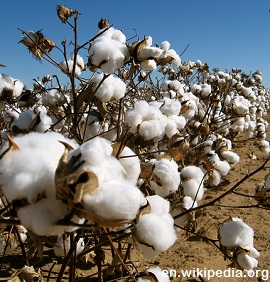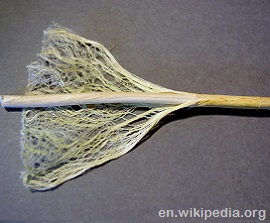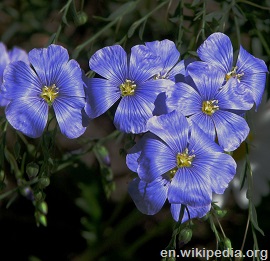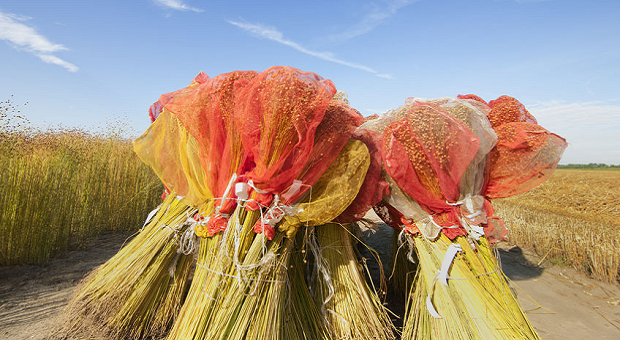It’s generally well-known that many animals produce fur that can be used to make yarn but there are also a few plants that can be grown for the same purpose. As a matter of fact, there are a couple that can be used for multiple purposes. Today we’re going to discuss the merits of growing plants for textile fibers in a post-SHTF society.
Before you rush out and buy a ton of seeds to start your textile farm, you need to be aware that hand-producing any textile in a quantity large enough to be useful is extremely laborious. It also requires quite a bit of land because most plants only yield a small percentage of raw product which must then be extracted and processed in order to be made into yarn or rope. Still, it’s going to be a useful trade so if you’ve got the land and the know-how, it may be worth your time.
Cotton
Cotton can be grown in just about any warm climate and is great for making yarn. Cottonseed oil can also be extracted from the plant and used for food, cosmetics, candles, soap and paint. Cotton is also fairly easy to process compared to other textiles and grows well in most of the southern US, from California to North Carolina.
{adinserter usdeception}To be exact, it grows well where the soil is moist but drains well. Cotton has a long growing period – up to seven months – so plan for that when you’re planting. It needs long, sunny days and at least 160 frost-free days. If you’re between the latitudes of 30 degrees north and 30 degrees south, you can probably grow cotton.
As soon as the soil is above 65 degrees F, you can plant the cotton seeds. You’ll want to till the soil so that it’s soft and aerated and you may want to add some fertilizer to make the soil ideal for plant growth. Cotton likes a rich soil so a bit of fertilizing in advance if your soil isn’t particularly nutrient-rich will be well worth the extra effort because your yields and quality will be better. Till the soil into ridges with furrows between each one to allow for proper irrigation.
To plant cotton, you can use one of two methods: you can plant them in mounds (called hills) with several seeds planted in the center, or you can plant them individually every foot or so. Which method is better pretty much depends on who you ask. Plant the seeds about 1-2 inches deep.

Be sure to weed your cotton field because weeds will leach necessary nutrients away from your plants. Cotton is susceptible to insect infestation throughout the growing period so consider using insecticide (natural or chemical) or predator insects that will kill the ones that want to damage your plants.
In about six weeks, your plants will begin to flower. It takes about 3 weeks for the flower bud to mature and blossom into cream-colored yellowish flowers. They’ll then turn pink, then red, then they’ll fall off. This takes about three days and all that will be left is a tiny pod, or ovary.
This ovary ripens and turns into a green pod called a cotton boll. The boll stays green while it grows to its full size – about 2 ½ inches – which takes about 3 weeks. For the next 6 weeks or so, the fibers inside the boll continue to grow and strengthen and about 10 weeks after your flowers first appear, they bolls will open up to reveal cream-colored cotton. After they open, the sun dries the fibers and it will look sort of like ribbon and there will be seeds embedded in the fibers.
At this point, the cotton plant needs to have its leaves removed in a process called defoliation. Sometimes this occurs naturally with frost but often it’s done with chemicals. If you’re going to pick your cotton by hand, you’ll have to defoliate the plants as you go.
Now your cotton is ready to be picked, baled and processed. This process requires another entire article, but the end result is clean cotton that is ready to be spun, and seeds that are ready to be processed and stored for next year!
Hemp

That’s a shame because hemp is one of the most versatile plants on the planet. The rope that can be made from it is one of the strongest natural ropes in existence and the seeds contain enough nutrients to actually independently sustain human life if necessary. You can also make yarn from it to sew into clothes, though it’s extremely course.
Another advantage to hemp is that it’s extremely hearty and will grow just about anywhere in the US. It requires little water and yields 200-250% more fiber per acre than cotton. Basically, you can grow hemp in places that other plants simply can’t thrive.
Hemp has antimicrobial and anti-mildew properties that make it a great crop and the fiber length that you get from each plant gives it a great yield. It’s strong, durable and absorbent. Fortunately, once SHTF regulatory practices will most likely fall by the wayside. Unfortunately, you can’t get a head start on your crops before that time.
Flax
Linen is one of the finest fibers desired by consumers. It comes from the flax plant and is one of the easiest fibers to be made into cloth. The downside here is that the same plants can’t be used for both linen production and production of nutritious flax seeds. Seed plants are short and produce high yields of seeds while the plants used for linen are taller and must be processed before the seeds develop in order to get the best quality fiber.

Shorter or more course flax fibers yield yarn that is suitable for canvas, sails, ropes and tents while longer or softer fibers are used to create soft linen that is used for clothing.
The process to create linen is arduous and requires several months of drying and processing in order to yield yarn. Flax grows best in moderate northern latitudes in moderately moist environments but can be grown successfully in a variety of climates.
Like hemp, flax is hearty and requires little to no pesticides or fertilizers. It’s also good to plant in areas that are susceptible to soil erosion. Finally, hemp will grow right at the edge of ponds, or even in the water so it can be grown where other plants can’t.
Hemp grows quickly, reaching 10-15 centimeters in height just 8 weeks after you plant it. It grows several centimeters per day under optimal growing conditions. Within 15 days, it will reach 70-80 centimeters.
Cultivating flax requires harvesting the plant, then letting them soak for several days to a couple of weeks while the fibers quite literally begin to rot. After they’re soaked, the flax plants are dried and stored for a period of weeks to months to cure. Then the fibers may be removed, cleaned and spun into yarn.
If you’re considering growing plants for textile fibers, these three are all viable options in the US, though hemp production is currently illegal. Be forewarned though that the process for all of them is labor-intensive. Though cotton may be the easiest to process, it’s also the plant that’s the most high-maintenance to grow.
We hope that we’ve given you a starting point as you consider your decision to grow plants for textile fibers in the event SHTF.
This article was just written as a general jumping-off point and we’d love to hear from you if have any knowledge or experience in this area. As always, we love to hear what you have to say so drop us a note in the comments section below!
This article has been written by Theresa Crouse for Survivopedia.









Pingback:How To Grow Plants For Textile Fibers – Prepper Dome | July 15, 2016
|